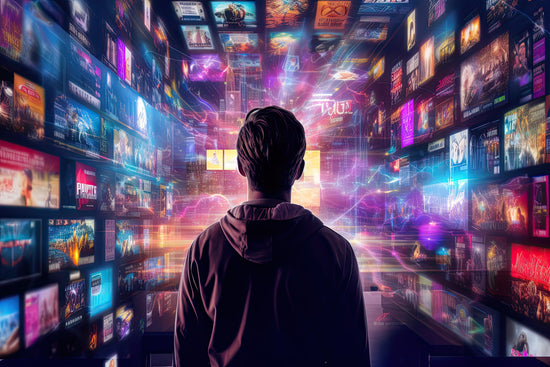Remember the days before cable TV? The programming available on the very limited number of channels we had on our televisions was all we had for information and entertainment. It was a “take it or leave it” deal. We did not complain, we did not think it was odd or inconvenient to sit through commercials during our favorite show. Commercial breaks allowed us to run to the bathroom or go into the kitchen and get a snack, just in time to come back to the couch and see if the leading couple had finally kissed, or if our team was able to score.
Our shows, games, news were on at a certain time of day or certain day of the week, and if you missed it, you missed it, unless you set your VCR to record it ahead of time, then you watched the tape when you got home. And it was all free.
Then, along came cable, along came TiVo, and alas, along came streaming. Suddenly, we are no longer bound to the Network’s schedule and we can watch whatever we want whenever we want. But at the same “suddenly”, free wasn’t free anymore. We would now pay for cable so we can watch the shows we want. We would now pay for streaming so we can watch the movies we want, all along still watching the commercials as we grew up with.
Finally, along came the offer to skip advertisements altogether, if we were simply willing to pay a little more. Today, people often opt to pay more for streaming services without advertisements for several reasons. One primary motivation is the desire for an uninterrupted viewing experience. Ad-free services eliminate the annoyance of frequent interruptions, allowing users to immerse themselves in content without breaks. Another consideration is the avoidance of irrelevant or repetitive ads, which can enhance the overall quality of the viewing experience. The absence of ads contributes to a cleaner and more streamlined interface, creating a more enjoyable and user-friendly platform. Perhaps most importantly, some users are willing to pay a premium for privacy, as ad-free services often collect less user data for targeted advertising.
But some things remain free, right? Social media platforms, for example, are still free to use and consume content. Yes and no. Yes, you can still consume content on social media for free, but your time and your focus have become valuable commodities in the inundated web environment, saturated with apps and companies competing for your attention. As individuals, we are nearing the end of our capacity to accommodate an unlimited number of attractions, and the minds behind social media platforms are acutely aware of that.
So what comes next? Just like with cable and streaming, the next step to get out from under the flood of (sometimes ill-directed) targeted marketing, you’ll need to open your wallet and spend your hard-earned money. YouTube has had a paid, ad-free version of its app for a while. Tiktok is testing an ad-free version of its app. X (formerly known as Twitter), already has paid tiers in its Premium levels and is exploring the possibility of a paywall for all users.
This progression is not only predictable, but also inevitable. “Free” has actually never been free. Everything costs something to someone. The only difference is that now you can assume that cost yourself, and break free from having your time and attention packaged and sold as a product to the highest bidder.






















